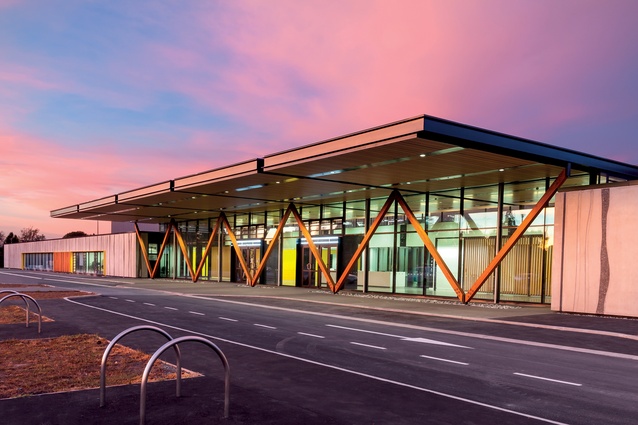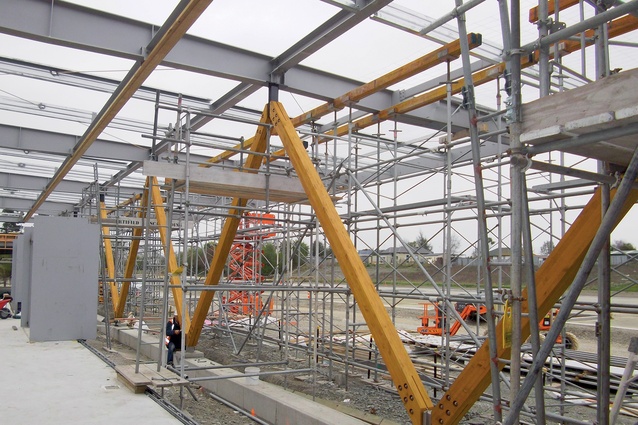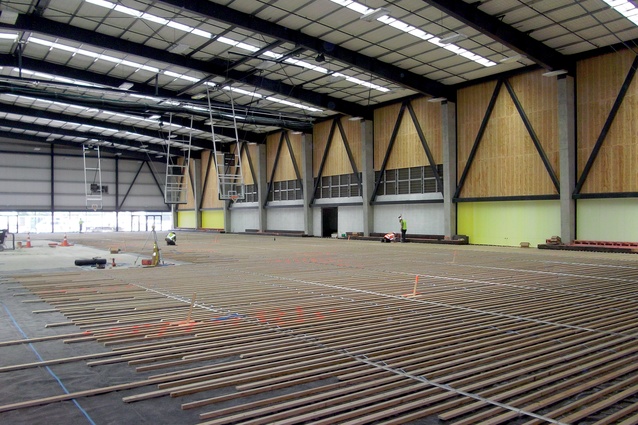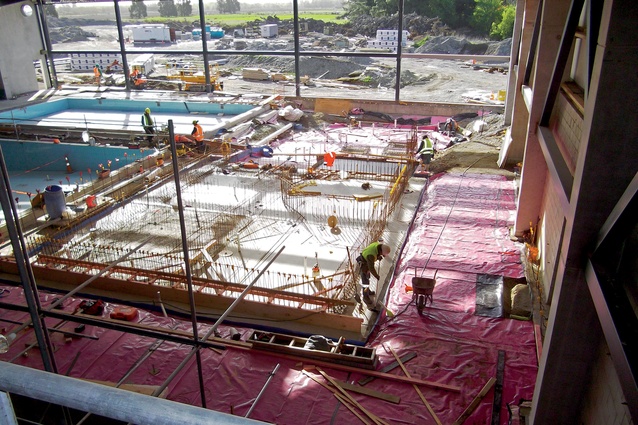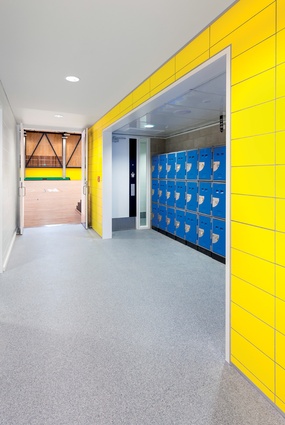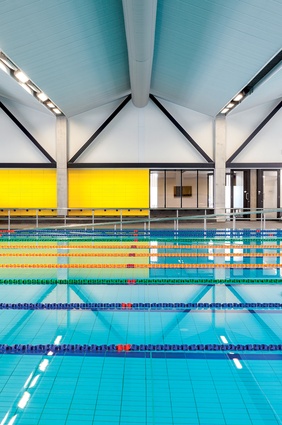Game on
Encompassing an area of just over 6000km2 and with nearly 50 per cent of its 33,000 inhabitants living outside of the urban area, Ashburton is fairly indicative of a lot of regional centres around the country – a small population within a comparatively large administrative region.
For many, this would be a recipe for decline as spiralling infrastructure costs spread thin ever-dwindling funds until one-by-one community assets are moth-balled, or worse, shut down permanently.
Ashburton, however, has bucked this trend with the recent opening of the EA Networks Centre, a $30-million, multidiscipline sports centre that has proved so popular there is already talk of expansion.
“I’m very proud to say we now have a world-class aquatic and recreational facility right here in Ashburton,” says mayor Angus McKay. “Having a development as significant as this in our district is testament to the commitment of each and every resident and business who has stayed true to the vision during this 10-year journey.”
The facility, which is wholly administered by the council, replaces the old Ashburton Community Pool and incorporates an aquatic centre, indoor stadium and a gymnasium. There is also an administration area that houses offices, changing facilities and a cafe, as well as two meeting rooms, which can be hired by the public for corporate or social events.
“The centre is the first stage of a recreation precinct master plan, which also provides for a number of outdoor fields,” says project architect Alex Head of Warren and Mahoney.

“Traditionally, there has always been a separation between council-owned sports facilities, however what we’re seeing more and more is a move towards this type of multipurpose facility where a number of efficiencies can be gained by having assorted services under the one roof.”
These efficiencies manifest in a number of ways, not least of which is a level of built-in asset protection by offering the public a one-stop-shop approach to their recreation needs. Increased associated commercial opportunities also make these facilities an attractive proposition – particularly in regional settings – and lend an element of future proofing.
“The challenge, of course, is that when you bring together quite disparate resources, you also increase design complexity,” says the architect. “Which is why we’ve adopted a ‘linear planning model’ for the design of sporting facilities.
“What this does, is it places the building along an axis with the main recreation areas located at either end. This not only maximises circulation corridors within the greater facility but it also allows for future capacity while mitigating disruption to the whole.”
Simple architectural elements such as gable roof forms also play into this planning model.
“For the stadium component of the design we’ve used a large-span gable roof structure supported by steel beams. This not only gives us the required strength and height, but also enabled us to design the end wall so that it can be completely disassembled when the time comes for expansion without compromising the portal frame,” says Head.
“At the other end, the aquatic centre features large-scale glazing to maximise natural light, while the roof structure itself is much lower, which helps minimise artificial heating costs. In between the two, the front-of-house zone also features ample glazing and the durable material palette has been augmented by feature glu-lam columns, placed in a zigzag pattern which has been carried through the centre in other materials.”
The aforementioned design complexity also translates to the construction of the centre, which is why project manager Nick Cournane of Naylor Love says it’s really important for all parties to have a good working relationship from the outset: “As was the case here, with ourselves and the team from Warren and Mahoney having already worked together on the Selwyn Aquatic Centre in Rolleston.”
“While there were definite differences between the two projects, Selwyn being just an aquatic centre and Ashburton being the full deal, that existing working relationship kept any potential issues to a minimum.” Unfortunately, the weather was not so forgiving. When the Naylor Love team began work it coincided with the wettest couple of months the district had suffered for a number of years.
“The site is on an old river terrace and although the survey had determined the water table was sufficiently below the building platform, the shear volume of rain significantly raised the water table, to the extent that we needed to employ pumps to keep the pool excavations dry,” says Cournane.
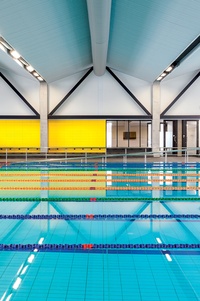
Coming in at 8000m2 and requiring a different construction approach for each of the three components, Cournane says the project was set up as three jobs.
“The site manager, Peter Taylor, was there to coordinate the whole project and then we had a foreman overseeing the pools, another on the stadium and then a third for the front-of-house/admin area.”
The aquatic centre comprises four pools – the 25m-competition pool, hydrotherapy pool, warm-water learn-to-swim pool and a leisure pool – a spa pool and steam room.
All of the pools are in situ concrete with a tiled finish, while the pool concourses feature non-slip flooring. The structure itself features a mix of structural steel, glu-lam timber, precast concrete, Kingspan cladding and glazing to the north.
The stadium houses four full-size multipurpose courts, seating for 320 spectators and was constructed from a mix of structural steel welded beams, precast concrete columns and panels, Kingspan cladding, long run roofing and glazing. Internally the key features are the sprung timber floor, hush panel wall linings and a thermally broken glazing suite giving an internal view to the pool hall.
Key features of the front-of-house area include a large foyer space complete with a structurally glazed façade, polished concrete floor, a warm roof and a large cantilevered canopy. Additionally, there is a mixed-mode ventilation system, which circulates fresh air throughout the centre.
The team, which also included many of the key subcontractors from Rolleston, began work in August 2013, just two months after completing the Selwyn Aquatic Centre, and finished in March 2015.
Cournane says despite the wet start, the build proceeded without major incident.
“There was a lot of community interest in the project, as it had been a long time in the planning. A trust had been set up to raise funds towards the project, which I believe raised more than $5 million in the end, so we held a couple of open days for trust members during construction so they could see what it was that they had been working towards.”

